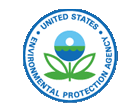Bt Cotton Refuge Requirements for the 2001 Growing Season
 |
Note: This information is provided for reference purposes only.
Although the information provided here was accurate and current
when first created, it is now outdated. |
Growers must choose one of
three structural refuge options for the 2001 growing season:
1. 95:5 external structured
unsprayed refuge
Ensure that at least 5 acres of non-Bollgard
cotton (refuge cotton) is planted for every 95 acres of Bollgard cotton.
This refuge may not be treated with any insecticide labeled for the control
of tobacco budworm, cotton bollworm, or pink bollworm. The size of the
refuge must be at least 150 feet wide. The refuge must be managed (fertility,
weed control and management of other pests) similarly to Bollgard cotton.
The refuge must be planted within ½ linear mile from the edge of the Bollgard
cotton field.
2. 80:20 external sprayed
refuge
Ensure that at least 25 acres of non-Bollgard
cotton are planted as a refuge for every 100 acres of Bollgard
cotton. All cotton may be treated with insecticides (excluding foliar
B.t.k. products) labeled for control of the tobacco budworm,
cotton bollworm, or pink bollworm. Ensure that a refuge is maintained
within 1 linear mile (preferably within ½ mile) from the edge of the Bollgard
cotton.
3. 95:5 embedded refuge
Plant at least 5 acres of non-Bollgard cotton
(refuge cotton) for every 95 acres of Bollgard cotton. The refuge cotton
must be embedded as a contiguous block within the Bollgard cotton field.
For very large fields, multiple blocks across the field may be used. For
small or irregularly shaped fields, neighboring fields farmed by the same
grower can be grouped into blocks to represent a larger field unit, provided
the block exists within one mile squared of the Bollgard cotton and the
block is at least 150 feet wide. Within the larger field unit, one of
the smaller fields planted to non-Bollgard cotton may be utilized as the
embedded refuge. This refuge may be treated with any insecticide (excluding
foliar B.t.k. products labeled for the control of tobacco budworm,
cotton bollworm, or pink bollworm whenever the entire field is treated.
The refuge may not be treated independently of the Bollgard field.
For areas affected by pink bollworm only,
the refuge cotton may be planted as single rows within the Bt cotton
field.
In cases where placement of the refuge within
one mile of the Bollgard cotton would be in conflict with state seed production
regulations, the grower must plant the refuge as close to the Bollgard
cotton as allowed.
4. A community refuge
program
A community refuge program will be allowed
as a pilot for the 2001 growing season. The community refuge for insect
resistance management must meet the requirements of either the 5% unsprayed
option (#1) and/or the 20% sprayed option (#2), or an appropriate combination
of the two options. The 5% embedded option (#3) is not allowed to be part
of the community refuge program. Monsanto must implement the 2001 community
refuge pilot program as described in the Bollgard® Cotton 2001 Refuge
Guide and Errata and perform the following actions.
Require each community refuge coordinator
to submit a signed community refuge form and copy of the field map with
refuge distances (to scale) or suitable scalar representation of the
community refuge to Monsanto by May 15, 2001; provide EPA with a copy
of the signed form and a copy of the field map (to scale) or suitable
scalar representation of the community refuge;
Conduct two phone audits of all community
refuge coordinators;
Include the community refuge program users
in the on-farm audit program by Monsanto and invite EPA to accompany
Monsanto on some of these visits;
Provide a written report to EPA at the
end of the 2001 growing season on community refuge use and compliance;
and
Conduct a review of the program by Monsanto,
National Cotton Council (NCC), and EPA after the 2001 growing season."
|

